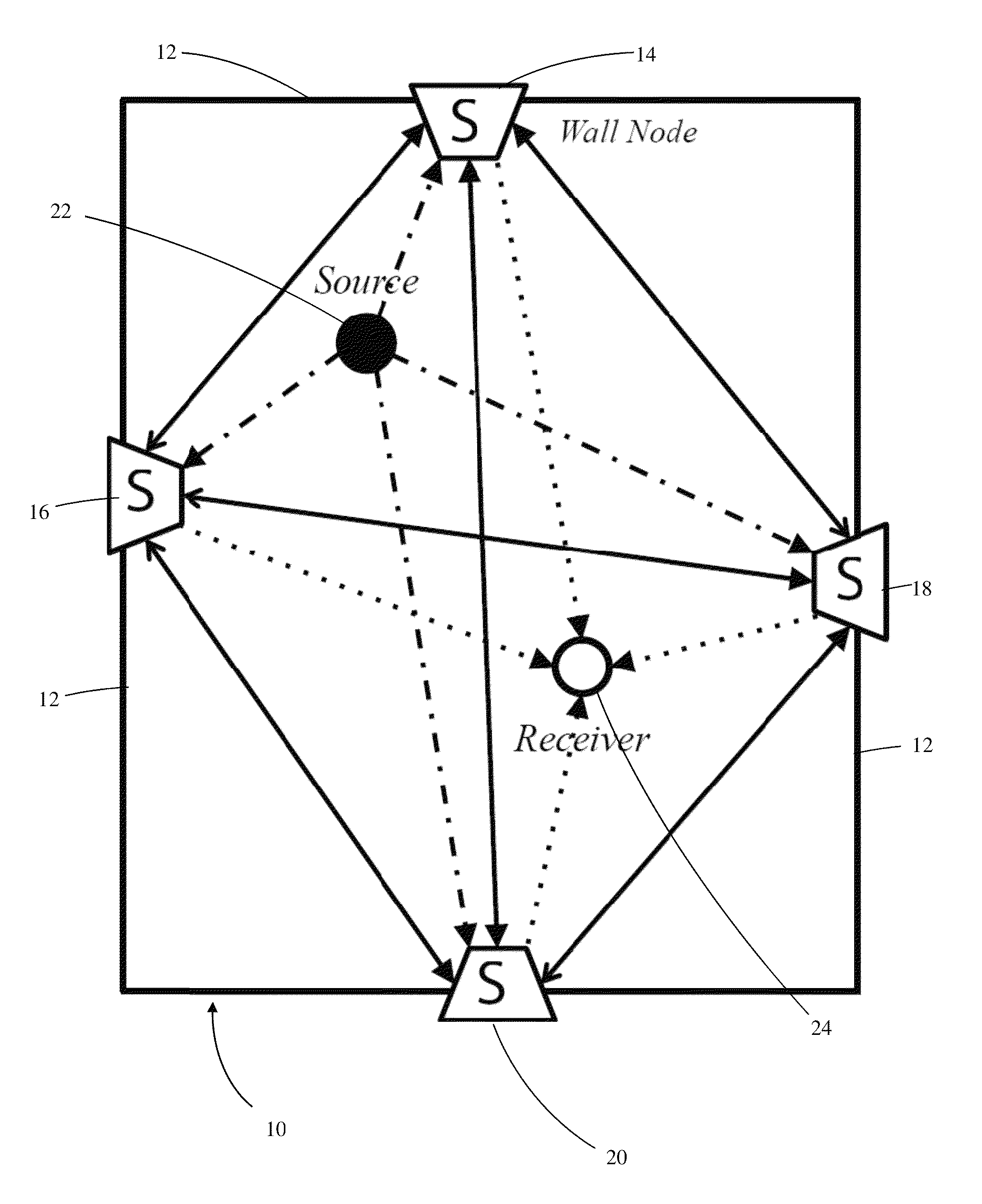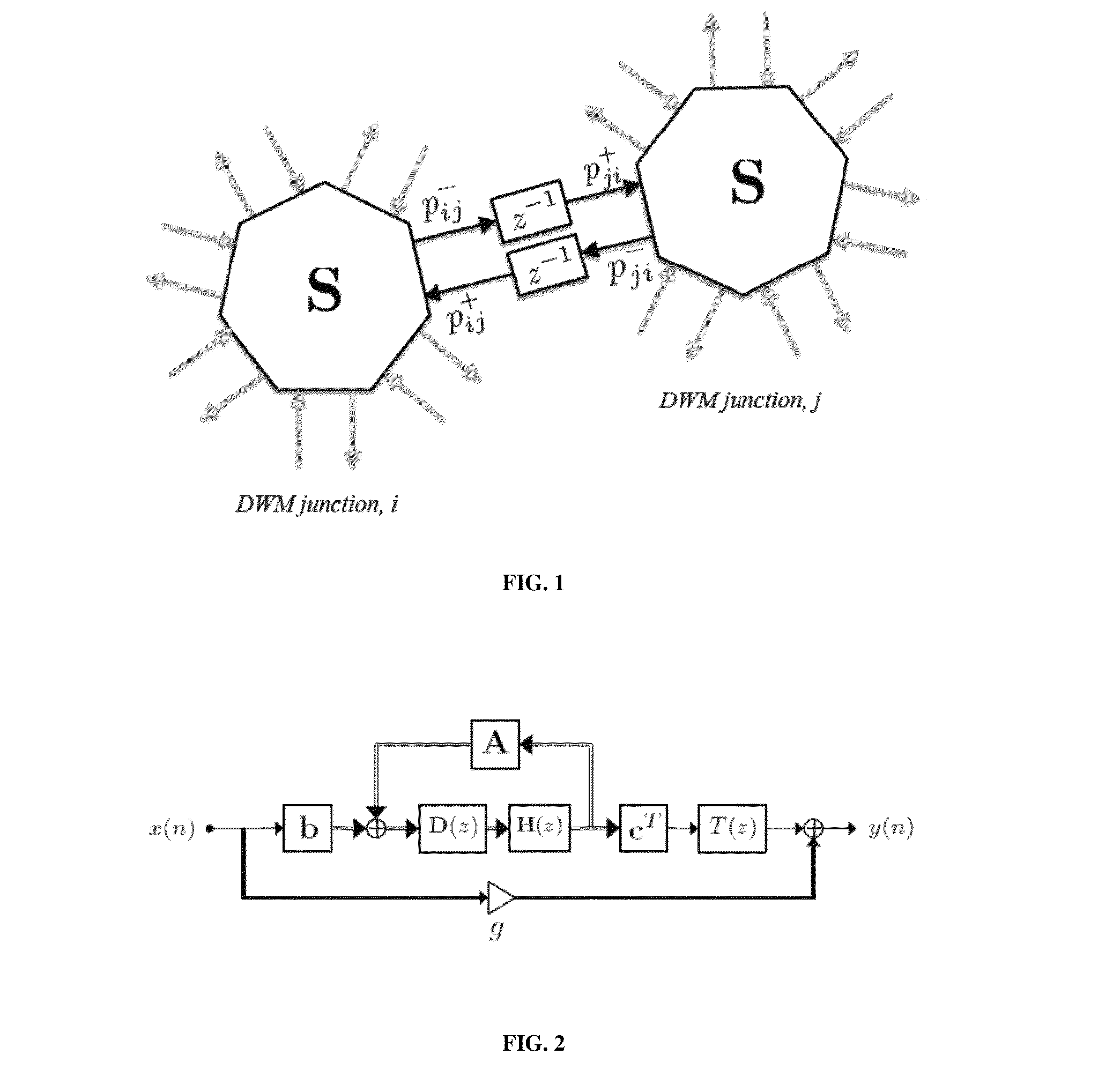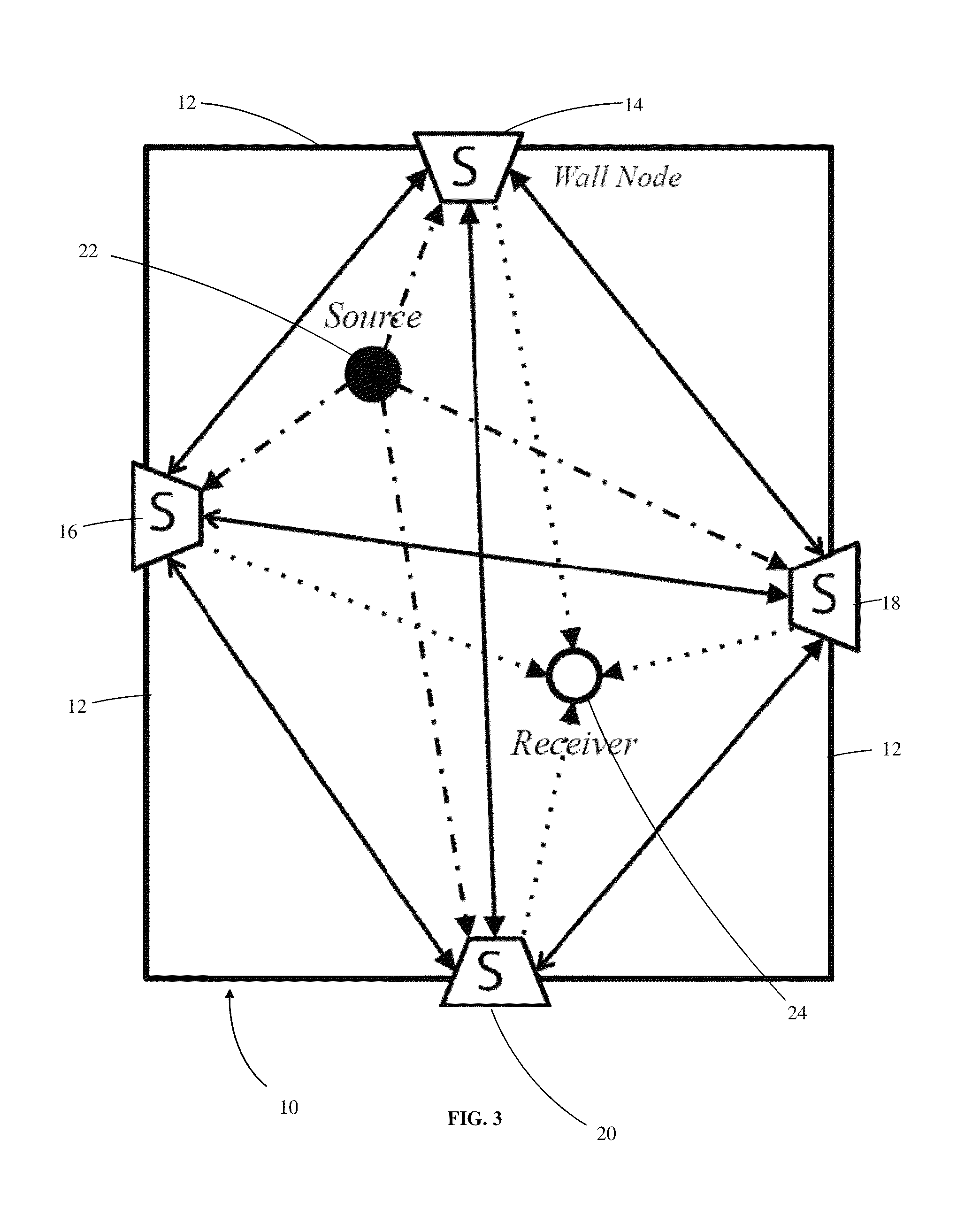Electronic device with digital reverberator and method
a technology of electronic devices and reverbs, applied in the direction of sound producing devices, instruments, electrical apparatus, etc., can solve the problems of inability to provide spatial audio effects that can be provided by conventional electronic devices, the computational complexity of accurate room acoustics simulators which makes interactivity infeasible, and the relative slowness of vr applications and computer games in taking up the available technology, so as to improve the realism of the user, reduce computational overhead, and be easily used
- Summary
- Abstract
- Description
- Claims
- Application Information
AI Technical Summary
Benefits of technology
Problems solved by technology
Method used
Image
Examples
examples
[0108]The RIRs of a rectangular cuboid room with dimensions l=[lx, ly, lz]=[9, 7, 4] is shown in FIGS. 8A-8C. Having defined the reference system origin in one of the room vertices, the source was placed at the centre of the room xs=[4.5, 3.5, 2], and the receiver at xs=[2, 2, 1.5]. The characteristics of the digital surface absorption filters were adjusted before each impulse was input into the digital reverberator 10. In each of the Figures the highlighted vertical lines (dashed lines) indicate the time of arrival of first-order reflections in the real world.
[0109]In FIG. 8A all the surfaces have a frequency-independent absorption coefficient α=0.2, which corresponds to surface filters of the kind Hi(z)=β=√{square root over (1−α)}=0.89, where β is the reflection coefficient. It is observed in FIG. 8A that both attenuation and delay of first order reflections are correctly rendered by the model. In FIG. 8B a slightly higher absorption coefficient of α=0.3 is employed. As expected, ...
example implementation
[0124]The digital reverberator 10 was initially simulated in MATLAB. Following that the digital reverberator 10 was implemented using C++ and compiled for use on an electronic device using the MACOS® operating system. In particular the digital reverberator was run on a MACBOOK PRO® with an INTEL® Core Duo2 2.53 GHz processor with 4 GB of RAM.
[0125]The C library ‘Libsndfile’ (available at the website identified as mega-nerd dot com / libsndfile / was used to read a WAV file from memory and input digital audio data into the digital audio input interface on the MACBOOK PRO was used. From the interface, the digital audio data was input into the digital reverberator which was implemented in C++ as 20 objects (e.g. one object was a junction, one object was a delay line, etc.). A WAV file of 1 second duration at a sampling frequency of 40 kHz took 0.07 s processing in an N=6 digital reverberator as described above with omnidirectional source and receiver nodes. PortAudio (portaudio dot com) wa...
PUM
 Login to View More
Login to View More Abstract
Description
Claims
Application Information
 Login to View More
Login to View More - R&D
- Intellectual Property
- Life Sciences
- Materials
- Tech Scout
- Unparalleled Data Quality
- Higher Quality Content
- 60% Fewer Hallucinations
Browse by: Latest US Patents, China's latest patents, Technical Efficacy Thesaurus, Application Domain, Technology Topic, Popular Technical Reports.
© 2025 PatSnap. All rights reserved.Legal|Privacy policy|Modern Slavery Act Transparency Statement|Sitemap|About US| Contact US: help@patsnap.com



